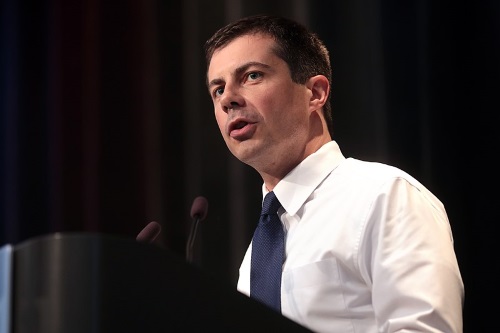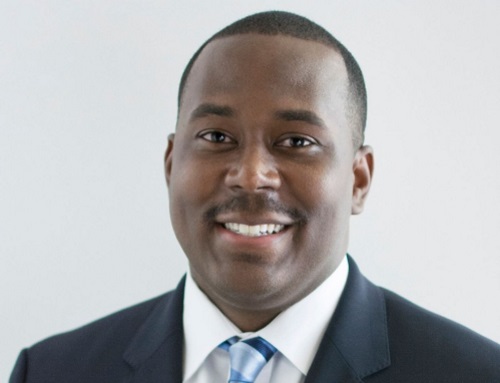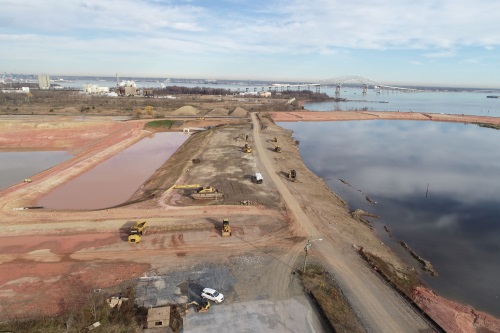FEDERAL ACTION
AASHTO’s Jim Tymon on Transportation and COVID-19, Working with a New Administration, and More – ITE Talks Transportation (Podcast)
Four highway funding questions for AASHTO – Pit and Quarry
DC Circuit Strikes Down Trio of Ozone-Emission Loopholes – Courthouse News Service
Biden’s push for electric vehicles could take funding away from infrastructure projects – NBC News
Biden to place environmental justice at center of sweeping climate plan – Washington Post
What Does Polly Trottenberg’s NYC DOT Tell Us About What She’ll Do in D.C.? – Curbed
COVID-19
State DOT CEO Roundtable at TRB Examines Transportation Impact of COVID-19 – AASHTO Journal
Vermont AOT gets over $500K federal grant to research COVID safety for public transit – Vermont Business Magazine
COVID-19 threw a curveball at curb management. Here’s how cities adapted. – Transportation for America (Blog)
NEPA
Vineyard Wind looks to regain spot in project pipeline – Herald News
INFRASTRUCTURE RESILIENCE AND SUSTAINABILITY
Talking Michigan Transportation – What to expect in transportation from a Biden administration – Michigan DOT’s Talking Michigan Transportation podcast
Searsport dredging included in Maine Dept. of Transportation’s three-year plan – Penobscot Bay Pilot
Bill would further prioritize transportation infrastructure preservation – Lens
BART, Capitol Corridor, JPA unveil plans for second Transbay Tube, transit-connected megaregion – KTVU-TV
Bills on community solar and air quality permit denials pass committees – New Mexico Political Report
Governor Cuomo Announces $200 Million in ‘Bridge NY’ Funding Available to Build Resiliency in New York Communities – New York Governor’s Office (Press release)
AIR QUALITY
GM seeks to end making gas- and diesel-powered vehicles by 2035 – Detroit News
Portland mayor seeks to delay proposed carbon tax after businesses complain – The Oregonian
Pittsburgh airport to test new air quality improvement technology – The Times
Decaying Urban Gas Lines Are Fueling Global Warming – Bloomberg Green
ENVIRONMENTAL JUSTICE
Legal Challenges Cast Cloud Over London’s Pandemic-Era Street Changes – CityLab
Here’s how Biden’s EPA can start right now to advance environmental justice – Chicago Sun-Times (Commentary)
NATURAL RESOURCES
State fines landowners for removing shoreline vegetation – VTDigger
‘Last line of defense’: New bill would strip protections for many of Indiana’s wetlands – Indianapolis Star
Alaska environmental regulators introduce plan to monitor cruise ship pollution after Gov. Dunleavy vetoed funding for onboard observers – Anchorage Daily News
Environmental groups sue to stop alleged surface mine pollutant discharge into Kanawha River tributary – Charleston Gazette-Mail
EPA, Clark County settle on mitigation for Clean Water Act violation – Mohave Valley Daily News
HEALTH AND HUMAN ENVIRONMENT/ACTIVE TRANSPORTATION
Study looks at the intersection of transit and land use planning – Times Leader
St. Louisans Push For Safer Streets After Pedestrian Deaths Nearly Doubled In 2020 – St. Louis Public Radio
St. Augustine’s proposed bike share, mobility efforts move ahead amid pandemic – St. Augustine Record
Texas A&M technology being used to make Houston better for walkers, bikers – KPRC-TV
TRB RESOURCES/ANNOUNCEMENTS
Cities as stakeholders in mobility – In Visible Capital (Podcast)
Intro Transportation Equity Webinar – University of Florida Transportation Institute T2 Center
New Report Highlights Guidance for Zero-Emission Bus Industry from National Transit Leaders – Center for Transportation and the Environment
FEDERAL REGISTER NOTICES
Applying the Supreme Court’s County of Maui v. Hawaii Wildlife Fund Decision in the Clean Water Act Section 402 National Pollutant Discharge Elimination System Permit Program – EPA (Notice of availability of guidance)
Framework for Automated Driving System Safety; Extension of Comment Period – NHTSA (Advanced notice of proposed rulemaking; extension of comment period)
Drawbridge Operation Regulation; New Jersey Intracoastal Waterway, Atlantic City, NJ – Coast Guard, (Temporary final rule)





